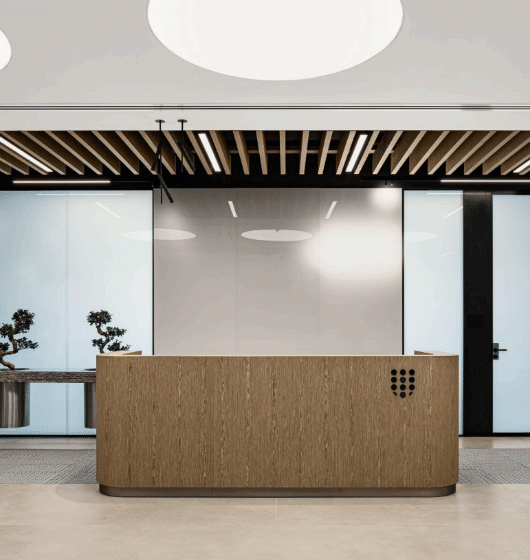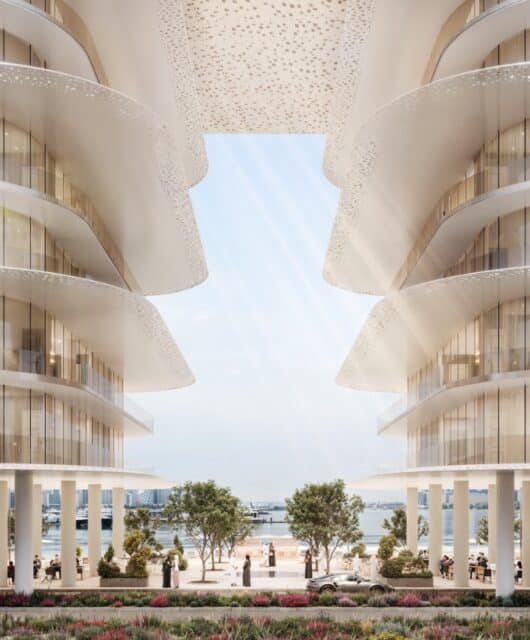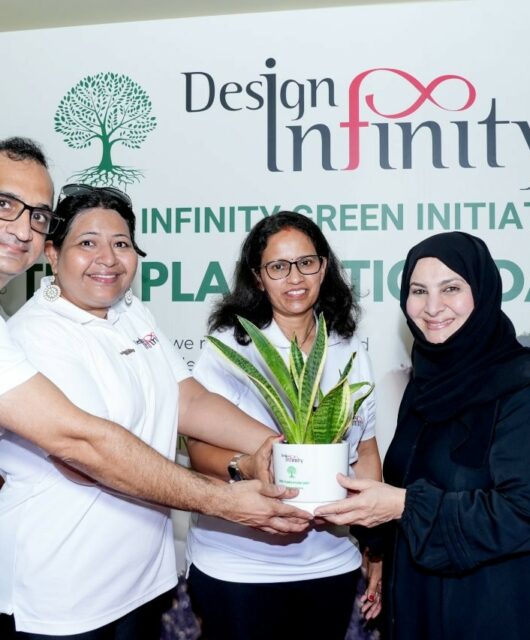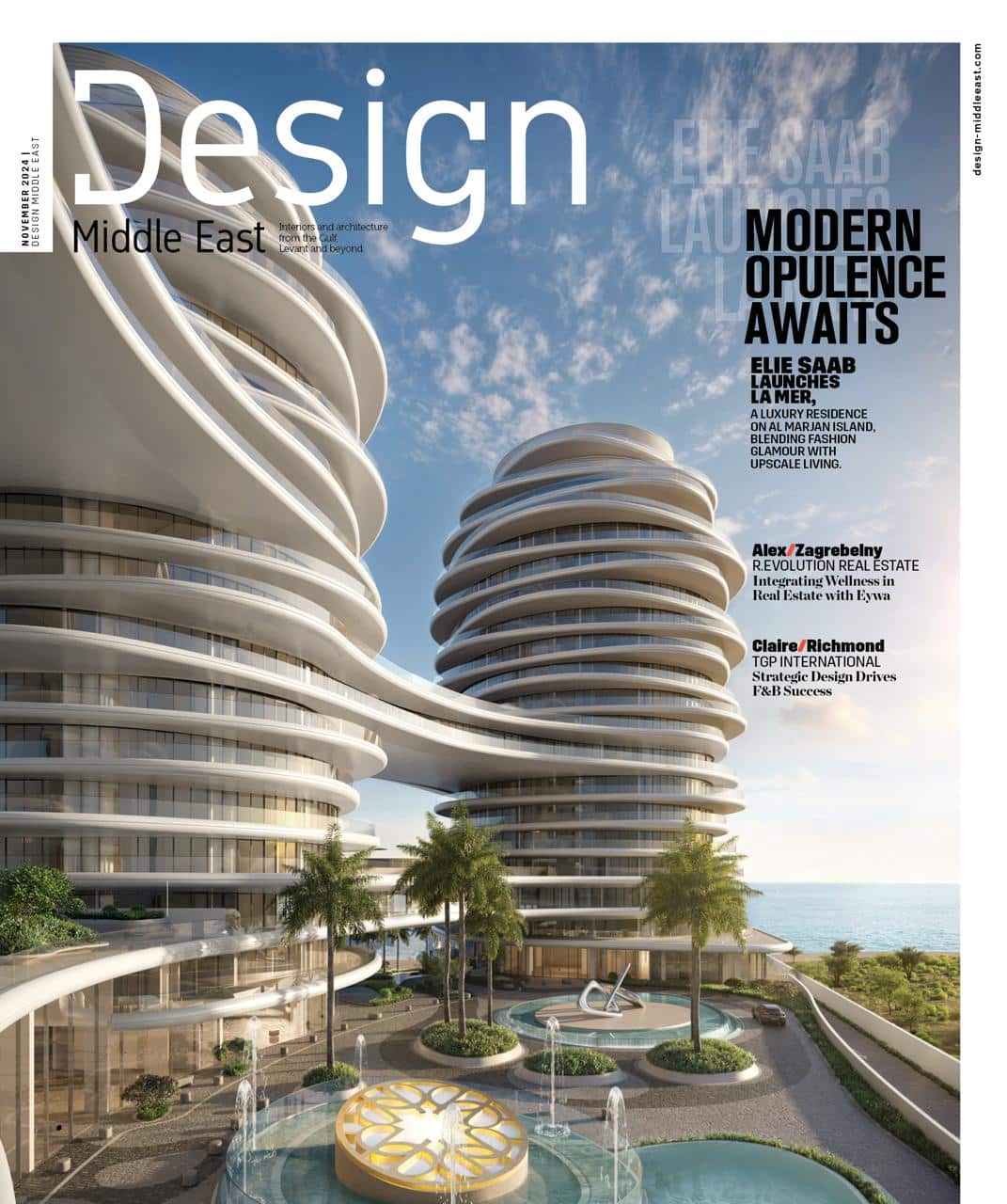Nothing spells drama like red!
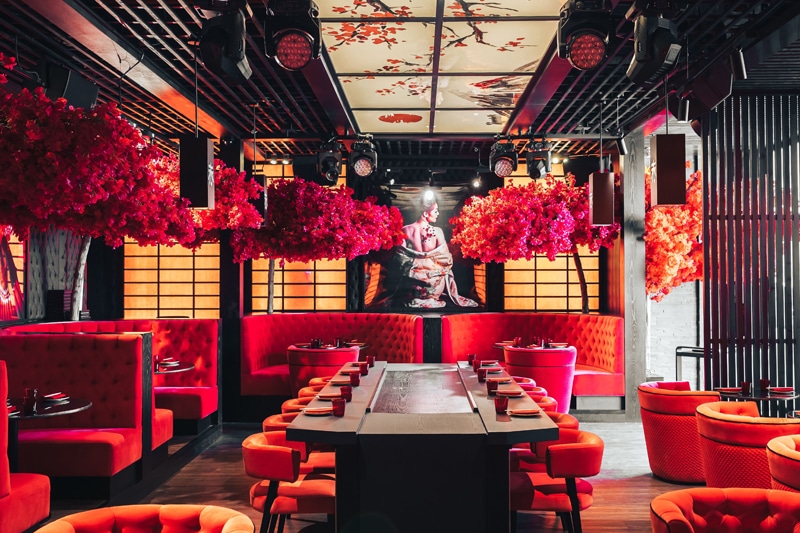 Colours and textures were crucial of this project! As the colour theme of the brand and restaurant are red, which attributes to the Japanese meaning of AKA meaning, red.
Colours and textures were crucial of this project! As the colour theme of the brand and restaurant are red, which attributes to the Japanese meaning of AKA meaning, red.
Dubai is no stranger to Japanese cuisine, so what makes AKA special? This new cyberpunk-inspired eatery in the prominent Palm Jumeirah location The Pointe boasts not just an incredible menu but bright and funky interiors. Inside, patrons are treated to massive blossoms of rich fuchsia floral décor that instantly transport you to Roppongi, Ginza or Ebisu in Japan. What makes it even more attractive is its prime location, right across the spectacular Palm Fountain and the Atlantis The Palm, where diners are entertained by the dancing waterworks every 30 minutes.
DESIGN MIDDLE EAST INTERVIEWED VICTOR DABU, INTERIOR DESIGNER, CO-FOUNDER/DIRECTOR OF PROJECTS AT STUDIO 2020 AND MIRZO HAFIZOV – ORZU HOSPITALITY GROUP FOUNDER TO KNOW MORE ABOUT THIS PROJECT
IN CONVERSATION WITH VICTOR DABU
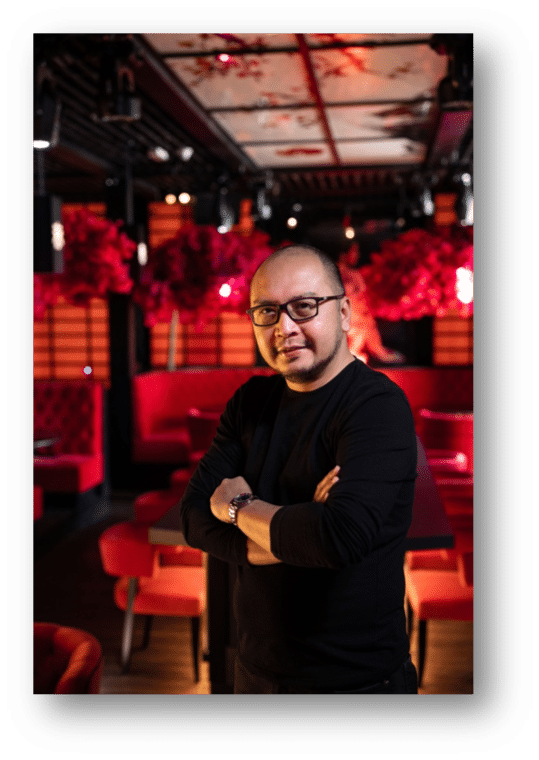
Talk us through your creative process, how did you approach AKA project?
Authenticity is and always will be the defining marker of my designs. Before I get creative on the drawing board, I always make sure that the client and I have had a couple of meetings and, most importantly, site visits. I believe a designer should establish rapport with the client to understand best their vision for the design and the overall concept. Once I have gathered my thoughts about the project concept, I start the design process. For AKA, I integrated architecture and interior design, as the client had a particularly unique idea of what they wanted. We achieved this through eclectic design, unusual materials, silhouettes and sophisticated colours. Inside AKA, the traditional Sakura trees and the rich, red velvet fabric instantly grab the guests’ attention. I used intricate lighting, craned murals and backgrounds to create an authentic Japanese experience. AKA’s space is limited, so we had to work meticulously to ensure the design would be operational.
AKA is influenced by Japanese aesthetics. Explain briefly a few of the highlights.
The dark feature wood is from “Yakisugi”, a traditional Japanese method for wood preservation of burnt timber. The symbolic Sakura tree is one of the exotic design elements of AKA that offer guests al fresco dining with the comfort of being indoors. Eccentric structural walls and ceilings were inspired by traditional Shoji and Fusuma designs. To top it off, the bright red fabric on the sofas and dining chairs complete AKA’s picturesque design and add plenty of character. Which is most important to you in restaurant seating, design or comfort? I would say they are both significantly important. Design and comfort should always complement one another in creating a successful restaurant design and experience – classical or contemporary, intimate or casual.
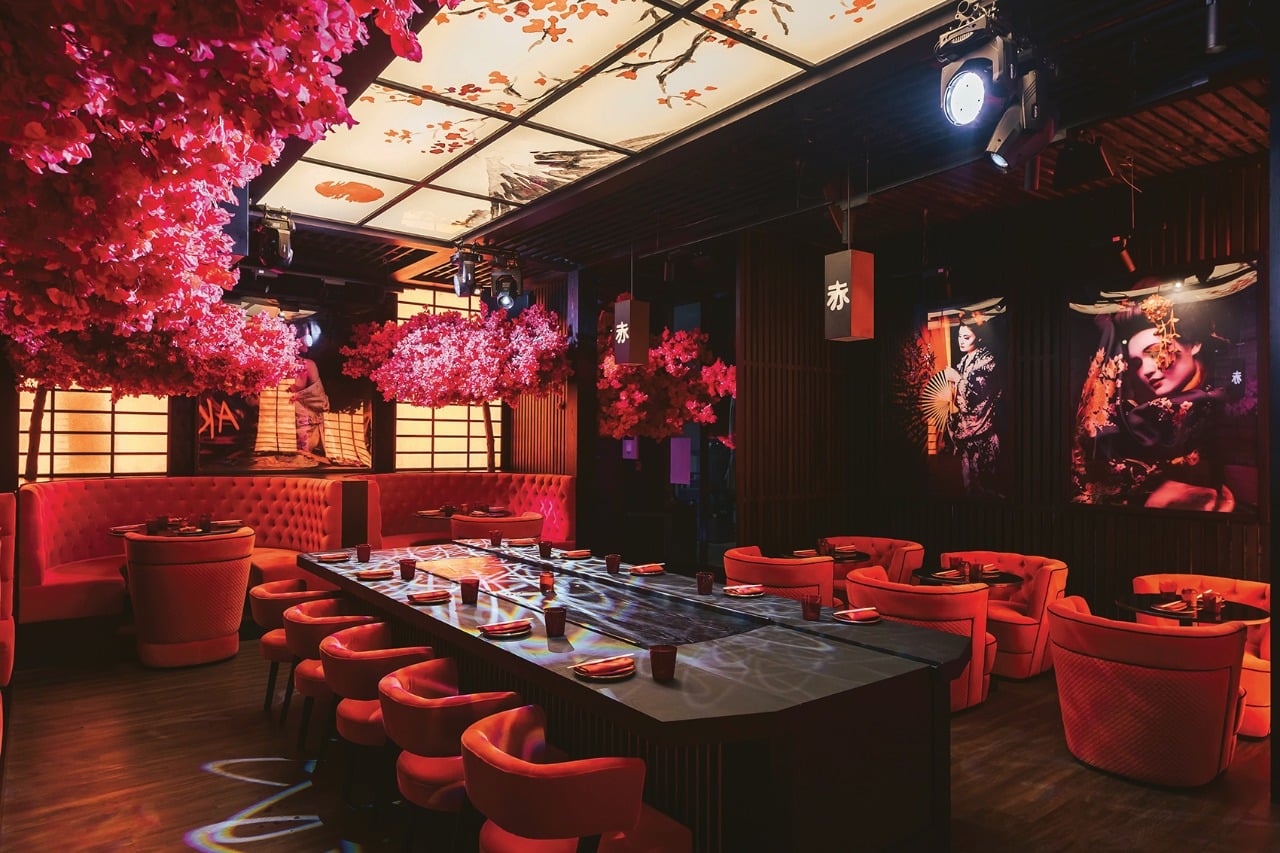
Absolutely, yes. We live in a digital era, and in a world of camera phones, the most common request from our clients is that the venue should always be picturesque. Hence, emphasis and zoning are imperative in creating a design and ensuring every area has a story to tell.
How COVID-19 has changed the mindsets of designers and their designs?
I think the global pandemic has taught us that, now more than ever, interior design matters. Public, private and commercial spaces across every industry are now more flexible and conscious about the effects of design and health and safety. Under quarantine, with more free time, I was able to learn more skills to add to my cram. With the introduction of remote work and social distancing, I believe that there will be a rise in the interior design industry, as there is already an increase in demand from clients who would like to renovate new and existing properties. I think that post-pandemic interior design will become even more creative and might even encourage designers to venture out of their comfort zones to become even better.
IN CONVERSATION WITH MIRZO HAFIZOV

What’s different about AKA?
When creating AKA, I knew that the jewel in the crown would be our performers and detailed interiors. The whole experience is very visual, so we’ve put beautiful Japanese cherry blossoms around the dining booths to create stunning photo opportunities for when our diners capture the live entertainment.
What’s the key to successful restaurant design?
Details are always the most important thing to consider when creating a restaurant brand, as you need to be clear on what makes your brand stand out from the rest. Social media is so deeply embedded into our society that people look for unique photo opportunities when dining out, as much as they look at the menu.
What has been the most interesting project you’ve taken on recently, and why?
Through founding my hospitality group, Orzu has given me a platform to bring all my ideas to life, this has been an interesting and exciting journey. Since we launched in December, we’ve opened ZOR, a traditional Uzbek restaurant, AKA that serves a delicious pan Asian menu, and Bramble, a quirky bar in the licensed Food District, all located on The Pointe. Each concept offers something unique. For example, ZOR offers Uzbek cuisine, something most people haven’t tried. Bramble is also located in a licensed food court, which isn’t common in this region. Last but not least, AKA will feature live entertainment like no other.
How has technology impacted and influenced design, and how might it continue to in the future?
As I mentioned, guests look for the details in design as they often look not only for a place to dine but somewhere picturesque to get the perfect pictures. Going forward I predict that we’re going to see restaurants trying to be as creative as possible with their designs to allow diners to create unique content. I’ve also read some restaurants are considering trialling robotic waiters in their teams as a novelty for guests. I prefer to keep service as personal and hospitable as possible, but should this become the ‘norm’ in years to come, then the design will need to be carefully considered to ensure that this option is fully functional.
How has the pandemic changed the hospitality industry forever?
The hospitality industry is versatile and resilient, so once restrictions are lifted, I believe the industry will thrive under the new ‘normal’. Two things that I’m sure most outlets will now consider carefully are delivery and remote dining. During the pandemic, even uber-luxury brands adapted to offer to dine at-home options. I think it would be wise to continue doing so if they’ve invested time and money perfecting the service to meet luxury standards. Before the pandemic, it wouldn’t have been on certain brands peripheral to deliver, yet now it’s normal.
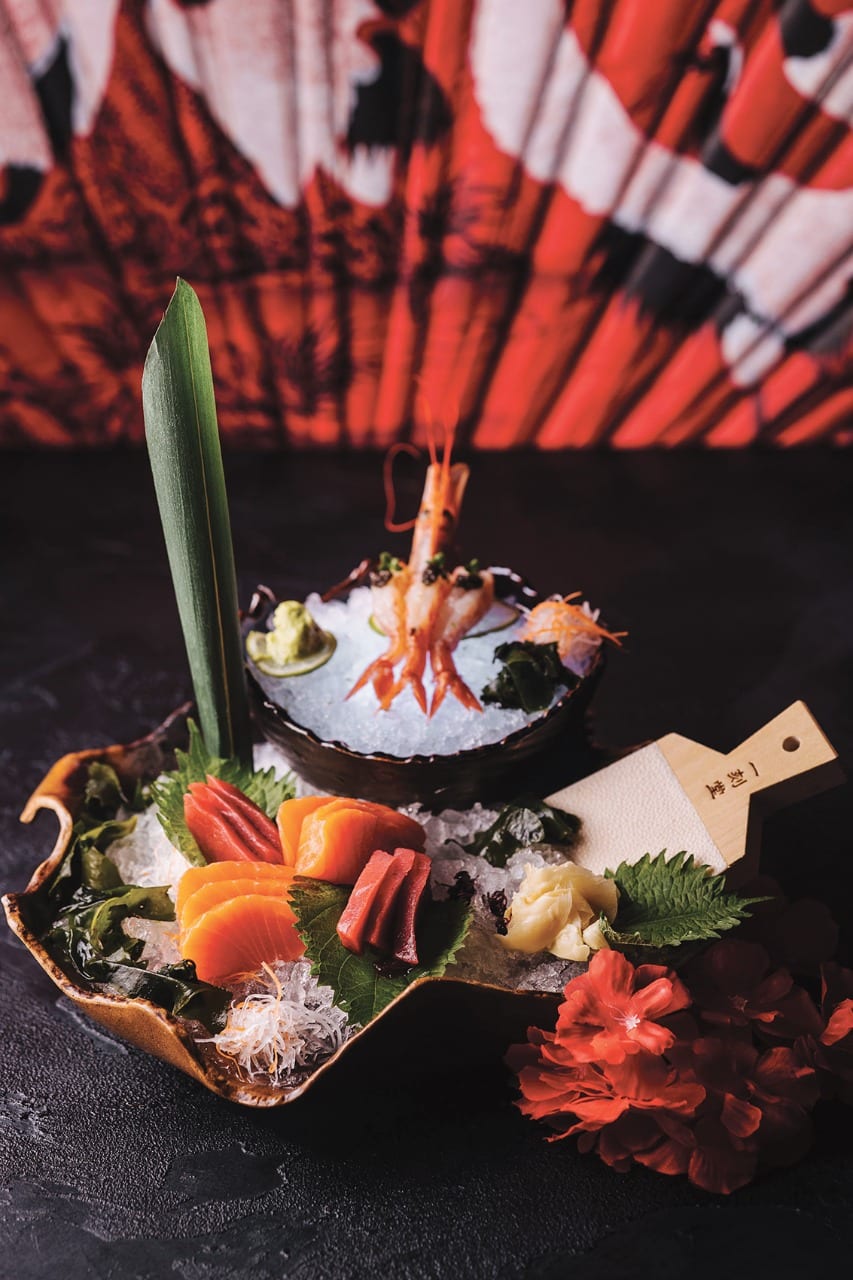
The menu on offer is a contemporary mix of Asian popular dishes such the Korean wings, chilli edamame and baby crispy squid. The green salad with avocado and sweet plum sauce is one item you shouldn’t miss out on.
The mocktails are snappy, matcha passion and mango maracuya punch are highly recommended. The Nigiri platter offers salmon, tuna, smoked eel, shrimp, and salmon roe on a bed of ice, and is a sensory treat. For the main course, the miso salmon is a clear winner.
The teriyaki and yuzu daikon flavour brings out the best in the meal. Also, on offer is the spicy seafood noodles, not very spicy in my opinion. The udon noodles are slurpy, while the mixed vegetables and mixed seafood add the crunch. As in all cases, the best is always reserved for the last – the assorted mochi platter is finger-licking delicious. Strawberry, raspberry, vanilla, passion fruit and chocolate flavoured, these mochis are easily some of the finest the city has to offer.

